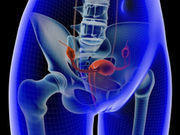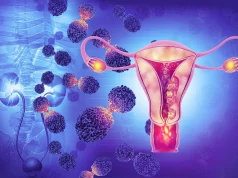Although overall risk for uterine cancer after risk-reducing salpingo-oophorectomy not increased
THURSDAY, June 30, 2016 (HealthDay News) — Women with BRCA mutations undergoing risk-reducing salpingo-oophorectomy (RRSO) do not have increased risk for uterine cancer, but the risk of serous/serous-like endometrial carcinoma is increased for BRCA1+ women, according to a study published online June 30 in JAMA Oncology.
Catherine A. Shu, M.D., from the Columbia University Medical Center in New York City, and colleagues examined the risk for uterine cancer and distribution of specific histologic subtypes in 1,083 women with a BRCA1 or BRCA2 mutation who underwent RRSO without hysterectomy. Overall, 627, 453, and three women were BRCA1+, BRCA2+, and both.
The researchers identified eight incident uterine cancers (4.3 expected; observed to expected [O:E] ratio, 1.9 [95 percent confidence interval (CI), 0.8 to 3.7; P = 0.09]). After stratifying by subtype there was no increased risk for endometrioid endometrial carcinoma or sarcoma. At 7.2 to 12.9 years after RRSO there were five serous and/or serous-like endometrial carcinomas (BRCA1: 0.18 expected; O:E, 22.2 [95 percent CI, 6.1 to 56.9]; BRCA2: 0.16 expected; O:E, 6.4 [95 percent CI, 0.2 to 35.5]). In all three available serous/serous-like BRCA1+ tumors there was loss of the wild-type BRCA1 gene and/or protein expression.
“This risk should be considered when discussing the advantages and risks of hysterectomy at the time of RRSO in BRCA1+ women,” the authors write.
One author disclosed financial ties to the publishing and biotechnology industries.
Copyright © 2016 HealthDay. All rights reserved.








